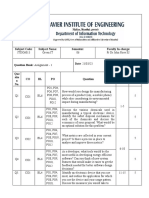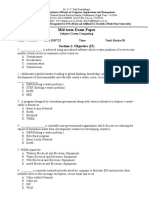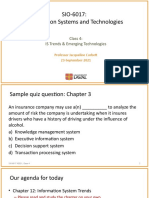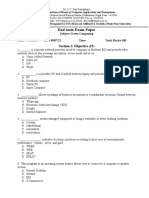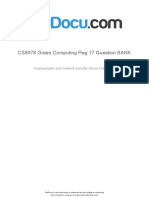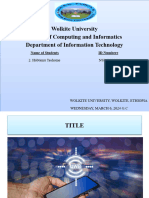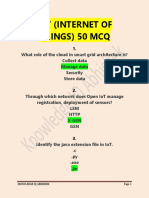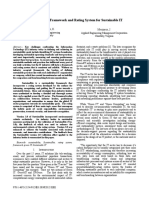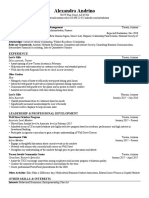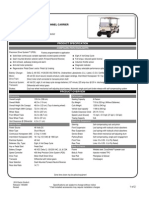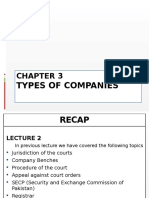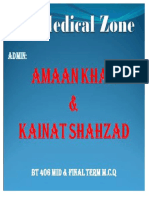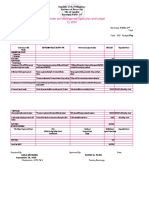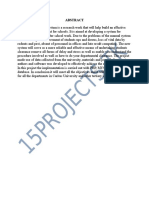Arka Educational & Cultural Trust (Regd.
)
Jain Institute of Technology, Davangere
(A Unit of Jain Group of Institutions, Bengaluru)
# 323, Near Veereshwara Punyashrama, Avaragere, Davangere- 577005.
Department of Computer Science and Engineering
Second Assignment
Course Name & Code : Green IT & Sustainability ( BCS456A ) Semester : IV
Name : ________________________________ USN : 4JD2_ CS ___ Sec : C
Note:
Answer all questions.
Each question carries 1 mark.
Submit the manually-ticked (With tick mark for the correct answer) latest by 14 / 05 /2025 without fail
1. Collective effect of service performances which determine the degree of satisfaction of a user of the service is
called
a) Contract service b) QoS c) Service bid d) None of the above
2. In ICT business, SLA stands for
a) Safe Leverage Aid b) Service Layer Aspect c) Service Level Agreement d) Safe Level Agreement
3. The three Ps or pillars of sustainable development of any ICT system are
a) People, Planet, Process b) People, Planet, Profit c) Planet, Process, Profit d) Profit, Process, People
4. The main difference with other systems is that ICT measures are related to
a) data security only b) data availability only c) data integrity only d) data performance only
5. Which of the following is not the main attribute used in the data measurement?
a) Quantity b) Reducibility c) Quality d) Security
6. Which of the following metric is very important in scientific computation?
a) Processing capacity b) Service tests c) Processing quality d) None of the above
7. With regard to data transportation, jitter is
a) delay variation between the same successive requests b) Noise introduced
c) Failure of data transportation d) Misuse of data transported
8. Data storage includes
a) storage speed b) storage capacity c) data throughput d) Both (b) and (c)
9. Which of the following service allows the user to play multimedia data from voice or Video acquisition crossing a
chain of ICT systems?
a) Video b) Audio c) Multimedia d) None of the above
10. -------- standard provides a framework for an enterprise to follow to set up an effective environmental management
system
a) ICT b) ISO c) SLA d) IEEE
11. Which of the followings is a metric or measure used to quantify and evaluate an
organization’s performance in relation to meeting of targets and objectives?
a) KPI b) ISO c) IEEE d) SLA
12. Three categories of key performance indicators are
a) Pollution, Earth’s resources and Ethics b) Pollution, People and Ethics
c) Pollution, People and Process d) Process, Earth’s resources and Ethics
13. Which of the followings is an example illustrating the standardization of remote Control architecture for digital
communities, intelligent building groups, and digital Metropolitan networks in terms of the energy, environmental
and security domains?
a) Intelligent network control protocol b) Digitization of all units protocol
c) Ubiquitous Green Community Control network working protocol d) Cloud based network protocol
14. -------- is a contamination that results in or can result in adverse biological effects to communities
a) Alteration b) Adaption c) Prevention d) Pollution
15. Ratio of facilities energy (supply side) to IT equipment energy (demand side) is termed as, and it evidently
assesses data center efficiency
a) PEU b) PUE c) PED d) PSD
16. Which of the followings is not the main green measures of performance?
a) Recyclability b) Energy consumption c) Adaptability d) Carbon emission
17. Which of the followings is not an ethic in ICT?
a) Social responsibilities to the management b) Social responsibilities toward the customers
c) Social responsibilities toward the employees d) Social responsibilities to the community
18. Design of green ICT systems requires formal or informal methodologies and tools to
a) Specify b) Verify c) Validate measures of performances d) All of the above
�19. Which of the followings explores in depth the problem to design first the overall required system in a concurrent,
recursive and iterative process?
a) Design of system component b) System requirements validation and verification
c) Testing phase of system d) Analysis and design phase
20. -----------engineering provides good practices for the eco-design of complex systems, especially to green the
design of ICT products?
a) Systems b) Reverse c) Protocol d) Hardware
21. Carbon emission and cost energy -------- with the number of ICT products in the architecture.
a) Remain the same b) Decrease c) Increase d) None of the above
22. Which of the followings has resulted in the development of new opportunities in the process of economic growth
and has led to the resolution of many social problems?
a) Integration b) Globalization c) Modernization d) Reunion
23. According to Mell and Grance, -------- is a model for enabling a shared pool of Computing resources on demand
that can be rapidly released with minimal management effort.
a) Integrated Computing b) Shared Computing c) Grid Computing d) Cloud Computing
24. Which of the following categories of cloud computing, allows users to rent an entire data center on a pay-as-you-
go subscription?
a) Hardware as a Service (HaaS) b) Software as a Service (SaaS)
c) Platform as a Service (PaaS) d) Infrastructure as a Service (IaaS)
25. Facebook is an example technology for
a) PaaS b) IaaS c) SaaS d) HaaS
26. What is the additional requirement in the ethics pillar for ICT architecture?
a) Energy efficiency b) Scalability c) Anonymity and privacy control d) Speed out accuracy
27. ------- is the delay variation between the same successive requests
a) Jitter b) Loss rate c) Throughput d) Capacity
28. What is the role of systems engineering in sustainable ICT?
a) To create complex systems with maximum performance
b) To design architecture that are energy-efficient and environmentally friendly
c) To increase software features d) To maximize hardware usage
29. In the context of ICT system measurement, what is often abstract and needs to be measures?
a) Data performance b) Hardware reliability c) User satisfaction d) System aesthetics
30. Which are the three specific metrics in data transport service?
a) Bandwidth, delay, throughput b) Bandwidth, Jitter and packet loss rate
c) delay, throughput and jitter d) Jitter, Bandwidth, delay
31. Which approach is often used in systems engineering to achieve sustainability?
a) Ignoring energy consumption b) Incorporating Life Cycle Assessment ( LCA)
c) Reducing system complexity d) Increasing production speed
32. Which report highlights the ambivalence of the ICT sector in climate change?
a) ISO 14001 b) SMART 2020 c) ITU-TE800 d) IEEE Green ICT
33. Audio compression can be used for ------------
a) Voice and data b) Video and voice c) Speech or music d) Picture and colours
34. Which of the following best describes sustainable cloud computing?
a) Using cloud resources to improve data security
b) Deploying cloud infrastructure that reduces energy consumption and carbon foot print
c) Expanding cloud services to more users d) Maximizing the use of traditional data centres
35. What does the SMART 2020 report indicate about the ICT sector contribution to global carbon emission?
a) 5% in 2007 b) 1% in 2007 c) 2% in 2007 d) 3% in 2007
36. Which type of storage device is a hard disk?
a) Tertiary b) Offline c) Primary d) Secondary
37. What is a significant challenge in cloud computing as a green technology?
a) High initial costs b) Limited scalability
c) Data Sovereignty issues d) Energy consumption of data centres
38. Cloud computing framework consists of
a) Platform as a service b) Infrastructure as a service c) Software as a service d) All of these
39. ICT does not include -----------
a) Tesla automotive b) Telephone c) Radio d) Television
40. How does cloud computing contribute to sustainability?
a) By requiring more physical servers
b) By reducing the need for physical infrastructure through virtualization
c) By increasing the complexing of IT management d) By promoting the use of fossil fuels
41. The term environmental sustainability refers to
a) Preserve natural environment b) Non preserve natural environment
c) Distributing the natural environment d) None of these
42. Hard disk and DVD-R are known as ----- in computers
a) Output device b) CPU c) Input device d) Storage devices
�43. Which of the following is a benefit of sustainable cloud computing for business?
a) Increased operational costs b) Enhanced brand reputation through green practices
c) Higher energy consumption d) Limited data accessibility
44. Comet Cloud’s master/worker programming model includes
a) Master b) Worker c) Client d) All of these
45. EPC stands for ----------
a) Electronic Product Code b) Electrical Product Code c) Electronic process code d) None of the above
46. How can cloud computing support sustainable practices in other industries?
a) By providing real time data analytics for energy management
b) By increasing the need for physical office space
c) By complicating supply chain logistics d) By promoting single-use software
47. Global Forest Watch is an online mapping tool created by
a) Microsoft b) IBM c) Google d) None of these
48. The recyclability rate of an item of equipment (pi) ranges from --------
a) 0 to 0.5 b) 0 to 1 c) -1 to 1 d) 0 to 00
49. Which technology is commonly associated with sustainable cloud computing?
a) Block chain b) Quantum computing c) Energy efficient cooling systems d) Augmented reality
50. The term “pay-per-use” model for using Computing services comes under
a) Grid Computing b) Autonomic computing c) Utility Computing d) None of these
51. --------- is a measure of carbon dioxide emission in environment of the data centre
a) Carbon Usage Effectiveness (CUR) b) Carbon Power Effectiveness (CPE)
c) Carbon Emission Effectiveness (CEE) d) Carbon Discharge Effectiveness (CDE)
52. What is the main goal of sustainable software design?
a) Maximum application features b) Reducing the environmental impact of software throughput its life cycle
c) Increasing software complexity d) Enhancing user interface design
53. The concept of enabling users to access servers without knowing the details of the servers is known as
a) Web Services b) Virtualization c) Green Computing d) None of these
54. The term ‘cloud’ in cloud computing refers to -------
a) The internet b) Cumulus clouds c) Computer d) Thin clients
55. Which of the following is a key factor in evaluating the sustainability effects of software?
a) User feedback b) Energy consumption during use c) Market share d) Software complexity
56. Sustainable development is based in
a) Direct impact on economy b) Indirect impact on economy c) Positive effect d) All of these
57. Which of the following is the most important area of concern in cloud computing?
a) Security b) Storage c) Scalability d) All of the above
58. What is a direct effect of sustainability during the use phase of software?
a) Reduced development time b) Lower energy consumption by the application
c) Increased marketing efforts d) Higher user engagement
59. The lifecycle of IT products depends on
a) Material acquisition b) Material processing c) Both a and b d) None of these
60. ------- is the essential concept related to cloud
a) Reliability b) Abstraction c) Productivity d) All of the above
61. Which of the following best describes run time energy consumption?
a) The energy used during the development of software
b) The energy consumed by software while it is running
c) The energy required for marketing the software d) The energy used for software disposal
62. The overall energy consumption of a device is based on
a) Low-power design b) Hardware design c) Circuit design d) All of these
63. Which of the following is associated with considerable vendor lock-in?
a) IaaS b) CaaS c) SaaS d) PaaS
64. How can physical properties of semiconductors be used to reduce energy consumption?
a) By increasing the size of transistor b) By utilizing low-power semiconductor material
c) By enhancing the clock speed of processor c) By increasing the voltage requirements
65. An obvious method for assessing the energy consumption of a given application is to measure
a) Power consumption of a device executing the code b) Processor types
c) Memory hierarchy d) None of these
66. ------ as a service is a hosted application that is the cloud equivalent of a traditional desktop application
a) Software b) Platform c) Analytics d) Compliance
67. Which compiler technique helps in optimizing energy consumption?
a) Code obfuscation b) Loop unrolling c) Dead code elimination d) Code duplication
68. Spatial locality refers to the use of data objects within
a) Specific data b) Scratch pad memory c) Storage locations d) None of these
69. Which one of the following is NOT a ‘Sustainable Development Goal’ (SDG) forget to be achieved by 2030?
a) Space Research b) Quality education c) Gender equality d) Zero Hunger
�70. Why is it important to consider energy consumption in sustainable software design?
a) To reduce development costs b) To enhance user experience
c) To minimize the environmental impact and improve efficiency d) To increase the number of features
71. Approaches to reduce the energy consumption in compiler techniques are
a) Static Analysis b) Dynamic analysis
c) Operational parameters of Hardware at run time d) All the above
72. The gas NF3 (nitrogen trifluoride) is estimated to be about -------- times more effective as a greenhouse gas than
CO2.
a) 17,000 times b) 1700 times c) 15,000 times d) 20,000 times
73. Energy consumption of multiprocessor system can be reduced by
a) Exploiting the heterogeneous nature of multiprocessor
b) Exploiting the homogeneous nature of multiprocessor
c) Clock frequencies d) None of the above
74. DVFS stands for -----
a) Dynamic Voltage Frequency Scaling b) Dual Voltage Frequency Scaling
c) Dual Voltage Frequency System d) None of the above
75. Which of the following is NOT a principle of sustainable software design?
a) Efficiency b) Scalability c) Energy consumption d) Obsolescence




